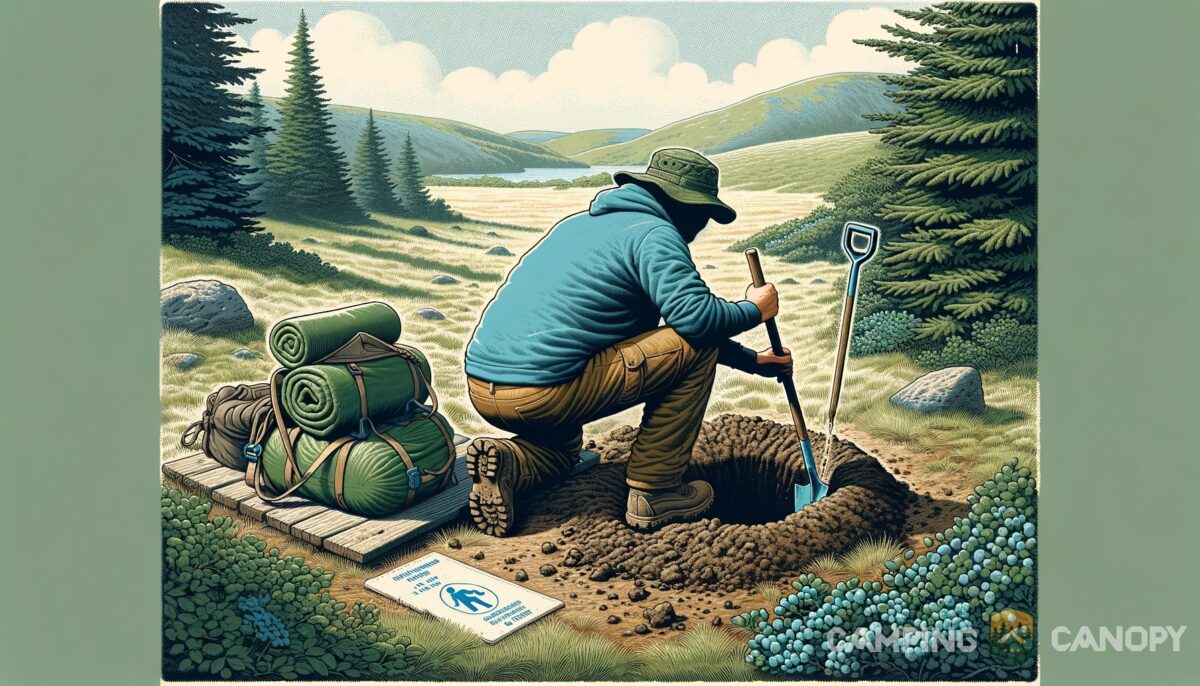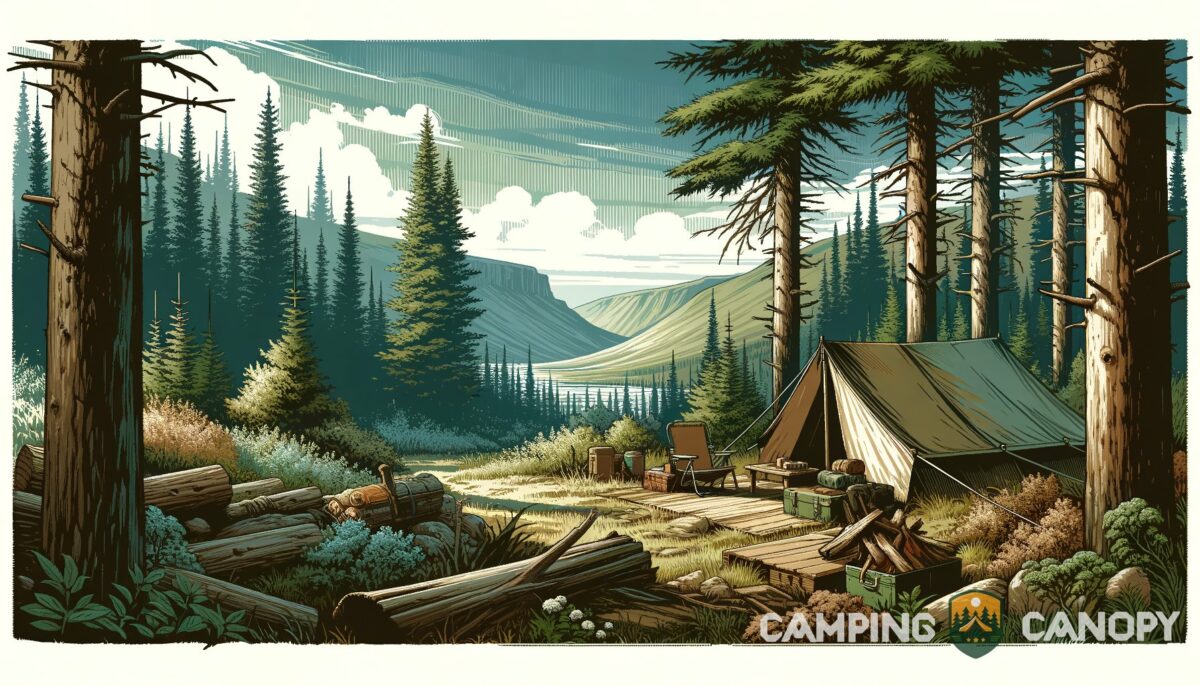Navigating the call of nature while on a hiking trail can be quite the dilemma, but knowing how to manage this situation is crucial for every outdoor enthusiast. In this post, you’ll learn about what a cathole is and why mastering the art of creating one is vital for keeping our wilderness areas pristine.
Key takeaways
- Proper preparation: Investing in the right tools like a durable trowel is crucial for efficiently creating catholes.
- Environmental consideration: Being aware of local regulations and the ecological impact of your cathole can prevent harm to the environment.
- Disposal of waste: Always pack out what you bring in, especially non-biodegradable items like wet wipes and hygiene products.
- Continual learning: Engaging with the outdoor community and staying informed about best practices ensures a better camping experience for everyone.
What is a cathole in camping?
A cathole is essentially a small pit dug into the ground, specifically designed for the disposal of human feces in a manner that abides by the principles of Leave No Trace. It’s a simple yet effective way to minimize your impact on the natural environment and ensure that the great outdoors remains beautiful and accessible for all.

When done correctly, a cathole enables natural decomposition and prevents the contamination of water sources and the spread of diseases.
Tip: When to pack out waste
In high-altitude or sensitive areas, packing out your waste may be the only option. Be prepared with odor-proof bags and a plan for disposal.
Key Points on Creating a Cathole
- Ensure it’s at least 200 feet from water, trails, and campsites: This distance helps avoid contamination of water bodies and reduces the chances of other campers stumbling upon it.
- Dig 6-8 inches deep: Soil microbial activity is highest in this range, which aids in the quicker decomposition of waste.
- Disguise the cathole after use: Covering the cathole with the original soil and natural materials helps in its decomposition and keeps it hidden from wildlife and other hikers.
Creating a cathole might seem straightforward, but it requires attention to detail and a commitment to preserving the wilderness. By following these guidelines, you can ensure that your time in the outdoors is enjoyable and responsible.
Continuing our exploration of catholes and their significance in preserving the wilderness, let’s dive deeper into the nuances of this indispensable outdoor practice. Understanding the right way to create and manage catholes is not just about following rules; it’s about fostering a sustainable relationship with the natural world.

Choosing the right tools for digging a cathole
A proper tool can make the process of digging a cathole much easier, especially in difficult terrain. The GSI Outdoors Cathole Sanitation Trowel is a highly recommended tool due to its lightweight design, serrated edges for cutting through roots, and measurements embossed along its length to gauge depth accurately.
Key features of an ideal trowel
- Durability and design: A trowel with serrated edges is best for digging through tough soil filled with roots and rocks.
- Measurements: Options like the GSI trowel have measurements indicated, ensuring you dig to the correct depth.
For those in less challenging conditions or in need of an improvised tool, an MSR Blizzard Tent Stake has also been known to do the job fairly well, though it’s more prone to bending. Always avoid using the heel of your boot, as it’s inefficient and can damage your footwear.
How to properly use and dispose of toilet paper and hygiene products
Even in the wilderness, maintaining proper sanitation practices is crucial. Toilet paper and hygiene products should be handled with care to avoid attracting wildlife or harming the environment.
Best practices for waste disposal
- Toilet paper: If regulations allow, bury it in the cathole. Otherwise, pack it out in Ziploc bags to prevent leakage.
- Hygiene products: All wet wipes, tampons, and similar products should be packed out.
Remember, always hang your waste bags containing used toilet paper or wet wipes at night to keep them away from nocturnal animals and dispose of them properly when you return to civilization. For more details on minimizing your impact, discover what the Leave No Trace principle entails.
Environmental factors affecting cathole efficacy
The effectiveness of a cathole in promoting waste decomposition greatly depends on environmental conditions, such as soil type, climate, and proximity to water sources.
Understand the environmental impact
- Soil type: Organic, rich soils with good exposure to sunlight are ideal for faster decomposition.
- Climate: Cooler, high-altitude areas may slow down the decomposition process, necessitating special considerations.
It’s essential to be cognizant of the local climate and soil conditions when planning where to dig a cathole. This knowledge not only ensures effective waste management but also contributes to the overall health of the ecosystem.
When and where to avoid digging catholes
Certain regions may have specific regulations or environmental conditions that prohibit the use of catholes.
I once found myself ill-prepared in the mid-winter Rockies, facing the hard, frozen ground with nothing but a standard plastic trowel. The experience underscored the importance of always carrying a durable, metal-edged trowel and respecting the unforeseen challenges posed by nature.
Chris, Founder of Camping Canopy
Dos and don’ts of cathole usage
When it’s time to answer nature’s call in the wilderness, knowing the dos and don’ts of cathole usage isn’t just about etiquette; it’s about environmental stewardship. Here’s a quick guide to help you manage your waste properly while camping or hiking.
Dos
- Do use a trowel designed for cathole digging, like the GSI Outdoors Cathole Sanitation Trowel.
- Do ensure your cathole is at least 200 feet away from water sources, trails, and campsites to avoid contamination.
- Do bury toilet paper in the cathole if permitted, or pack it out if not.
- Do disguise your cathole with natural materials after use to leave the area as you found it.
Don’ts
- Don’t dig catholes in areas where they are prohibited due to environmental reasons.
- Don’t use hygiene products like wet wipes or tampons without packing them out—these do not decompose well.
- Don’t disturb the natural landscape more than necessary when digging your cathole.
- Don’t forget to sanitize your hands after handling waste or toilet paper.
Restrictions and considerations
- High elevation and sensitive areas: Some locations do not permit cathole use due to the slow decomposition rate.
- Proximity to water sources: Always adhere to guidelines, keeping catholes at least 200 feet from any water source.
Before you set out on your adventure, make sure to research the area’s guidelines and regulations regarding waste disposal. Ignoring these rules not only harms the environment but could also result in fines or penalties.
| Feature | Importance |
|---|---|
| Depth (6-8 inches) | Ensures proper decomposition |
| Distance from water (200 feet) | Prevents contamination |
| Sunlight exposure | Aids in faster decomposition |
| Soil type | Organic, rich soils decompose waste efficiently |
Continuing on our journey through the intricacies of cathole usage and its importance, let’s dive into some more insights that I’ve gathered through my years of camping and advocating for responsible outdoor ethics. Whether you’re a seasoned hiker or new to the wilderness adventures, understanding the comprehensive scope of catholes and their role in our ecosystem can significantly enhance your camping experience.
One aspect usually overlooked is the role of local wildlife in the decomposition process. While we strive to minimize our impact, it’s worth noting that some animals are naturally attracted to human waste due to salts and other minerals.
This underscores the importance of properly disguising catholes post-use. Not only does this practice keep the site unnoticeable to other hikers, but it also deters animals from potentially harmful interactions with human waste.
Moreover, the season and climate in which you’re camping can significantly affect your approach to digging catholes. In winter, for example, the ground may be frozen, making it nearly impossible to dig a cathole without the proper tools.
Tip: Choosing the correct trowel
Always opt for a lightweight trowel with durability for your camping trips. It’s not just about digging; it’s about ensuring you leave no trace.
In these scenarios, alternative waste disposal methods, such as portable waste bags, become invaluable. It’s essential to prepare accordingly and understand the limitations and adaptations required by different environments.
Engaging with local camping or hiking communities and authorities can also provide valuable insights into specific area guidelines regarding cathole use. Some regions might have unique conditions or restrictions based on local environmental concerns, wildlife, or ongoing conservation efforts.
Staying informed and adaptable is key to both enjoying your outdoor adventures and ensuring you leave no trace.
Addressing these more facets of cathole usage not only enhances our respect and understanding of nature but also prepares us for a more enjoyable and responsible camping experience. Remember, every small action taken to preserve the wilderness contributes to the collective effort of maintaining the beauty and health of our natural spaces for generations to come.
Frequently asked questions (FAQ)
While you can use sticks or rocks in a pinch, a dedicated trowel is much more effective and less harmful to the environment.
If you stumble upon a used cathole, it’s best to leave it undisturbed and find another location for yours. Report it to park authorities if it’s not properly disguised.
Leaves, branches, and forest duff can be used to naturalistically cover the cathole, blending it into the surrounding environment.
Animals can be attracted to catholes due to the minerals in human waste, so it’s important to ensure the cathole is well concealed.
In emergency situations, do your best to adhere to guidelines, but remember, safety and health come first. Always seek to minimize impact.
Yes, heavy rainfall can expedite the decomposition process but also poses a risk of overflow or exposure, underscoring the need for proper placement and depth.

Final thoughts
In wrapping up our discussion on cathole usage for responsible camping, it’s clear that something as simple as where and how we choose to dig a cathole can significantly impact the natural environment. By adhering to the guidelines and considerations shared in this blog post, you’re not just being a conscientious camper; you’re playing a crucial role in the preservation and protection of our cherished wilderness areas.
Remember, every step taken towards minimizing your impact helps ensure that these spaces remain pristine and enjoyable for all. For more insights on how to make your camping adventures more sustainable, discover the Leave No Trace principles.
















